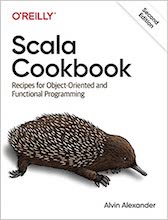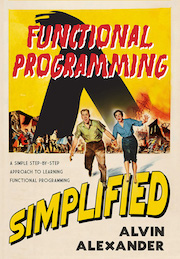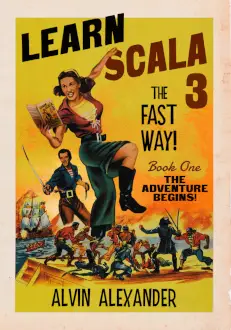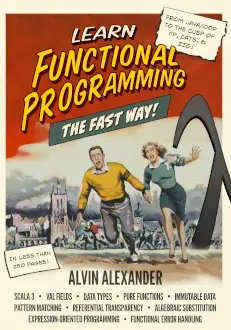| Said to be the only book Steve Jobs had on his iPad | |

|
Autobiography Of a Yogi |
This is a simple Markdown cheat sheet that I created for my own needs, so I can find what I use and need quickly. If it’s a helpful resource for you too, cool.
Headers
# H1 ## H2 ### H3 #### H4 This is also an H1 ================== And this is an H2 -----------------
Paragraphs
- A paragraph is one or more consecutive lines.
- One or more empty lines marks the end of a paragraph.
- 2+ blank spaces at the end of a line create an HTML break (
<BR>tag)
Lists
- Use
*with no indentation for unordered list. (Can use+or-instead, if preferred.) - Use
1.with no indentation for ordered lists. Can be (1,1,1) or (1,2,3). - The markers you use can be indented up to three spaces.
Code blocks (PRE and CODE)
PRE blocks (technically <pre><code>...</code></pre> blocks):
- Either (a) indent code by 4 spaces or 1 tab, or (b) use four backtick marks on the lines before and after your code block
- An improved form is to create a PRE block is this:
```scala... code in here ...``` - Special characters
&,<, and>are automatically handled
this shows the four-space approach:
this is some code
some more code
this shows the backtick approach:
````
some code here ...
some more code ...
````
Here’s the form that lets you specify a PRE/CODE block and the programming language or environment inside of it:
```scala
println("Hello, World")
```
CODE spans:
- Use backticks around code: `
doFoo()`
Links
This is [an example](http://example.com/) link This is [an example](http://example.com/ "Title") with a title
Blockquotes
- Prefix each blockquote line with a greater-than symbol
> - Add additional
>symbols for more indentation levels.
Example:
> This is a blockquote with two paragraphs. Lorem ipsum dolor sit amet, > consectetuer adipiscing elit. Aliquam hendrerit mi posuere lectus. > Vestibulum enim wisi, viverra nec, fringilla in, laoreet vitae, risus.
Fonts
These examples show how to use italics and bold fonts in markdown:
_emphasis_ __strong__ `doFoo()` // code
Italics and bold fonts with Markdown are actually a bit more flexible:
*single asterisks* // em _single underscores_ // em **double asterisks** // strong __double underscores__ // strong
If you really need asterisks use a backslash:
\*this text is surrounded by literal asterisks\*
Images
 
Tables
Tables don’t seem to be a standard in Markdown, but these days I use the MacDown editor, and this table format works fine with MacDown:
| Tables | Are | Cool | | ------------- |:-------------:| -----:| | col 3 is | right-aligned | $1600 | | col 2 is | centered | $12 | | zebra stripes | are neat | $1 |
I found that syntax on this Markdown cheat sheet. That link notes that the outer pipe symbols are optional, and there must be at least three dashes (---) in each header cell.
Comments
When you’re working with a large Markdown document it’s nice to be able to include comments inside your Markdown text. You can do this by putting your comments inside HTML comment tags:
<!--- your comment goes here and here -->
I found this tip here on SO, where the author suggests using triple dashes so your comments will be safe when your Markdown is used with other tools like Pandoc.
Miscellaneous
- Create a horizontal rule (
<HR>tag) with three or more asterisks, hyphens, or underscores.
More Markdown information
- For more information and details, see http://daringfireball.net/projects/markdown/syntax
- Here is a link to an online editor: http://markable.in/editor/
- Another online editor: http://dillinger.io/
| The Bill Gates Bestseller | |

|
How to Avoid a Climate Disaster |
An example
Here's a Markdown example from one of my Github projects. It doesn't use all of the Markdown functionality, but it's a start.
Akka Remote "Hello, world" Example ================================== As it's name indicates, this is a simple "Hello, world" example for Akka remote actors. It shows how to create a local actor, a remote actor, and send messages between them. Assumptions ----------- For the purposes of this code, I assume you know the following: 1. Scala 1. SBT (the Simple Build Tool) 1. How to use Akka actors within one JVM (i.e., the actor basics) Running the Code ---------------- Follow these steps to run the code: 1. `cd` into the _HelloRemote_ directory. 1. Type `sbt run` to start the remote actor system. 1. In a separate terminal window, `cd` into the _HelloLocal_ directory. 1. Type `sbt run` to start the local actor system. When the local actor system starts, it will send an initial message to the remote actor system. The remote actor will send a reply through its `sender` reference, and this will continue five times. When the action stops, stop each system by pressing Ctrl-C. Problems? --------- If you're having any problems with this code, edit the _application.conf_ file in the _src/main/resources_ directory of each project, and remove the comments from the debug-related lines. More Information ---------------- See the following URL for more information: http://alvinalexander.com/scala/simple-akka-actors-remote-example



